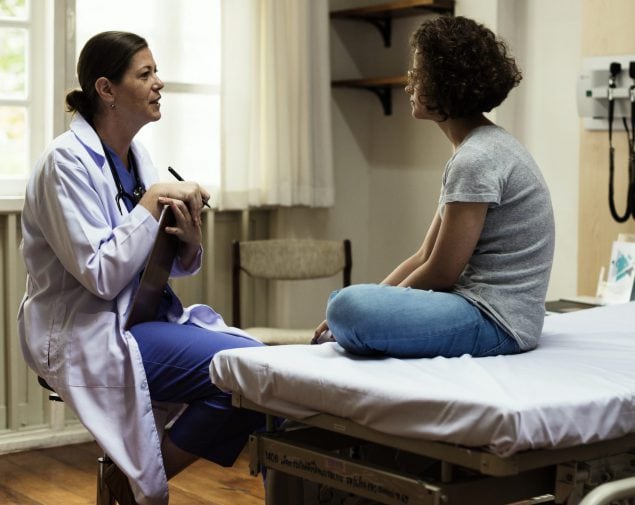Quality and Access for Reproductive Health Equity for Teens
QARE for Teens Project

Access to quality reproductive health services, including contraception and sexually transmitted infection services, plays an important role in supporting the health and well-being of adolescents and in promoting health equity. In September 2020, in collaboration with the National Association of Community Health Centers (NACHC) and Cicatelli Associates, Inc., CDC launched the Quality and Access for Reproductive Health Equity (QARE, pronounced ‘care’) for Teens project. Built on past community– and clinic-based teen pregnancy prevention initiatives, the goals of this project are to:
1) Facilitate quality improvement of adolescent sexual and reproductive health services in community health centers.
2) Increase access to those services.
A key component of this project is the development of an adolescent sexual and reproductive health (ASRH) quality improvement (QI) package, known as Q4T (Quality for Teens). Modelled after other CDC “change packages,” such as the Cardiac Rehabilitation Change Package and the Tobacco Cessation Change Package, Q4T contains change strategies, implementation tips, and related tools and resources for implementing ASRH QI initiatives in community health centers.
To develop the initial draft of Q4T, the QARE for Teens team conducted several activities, including an environmental scan, a convening of experts, and reviews by multiple individuals with expertise in implementing ASRH QI initiatives in health center settings. Following these activities, three health centers and one county health department participated in a 5-month learning community to pilot test Q4T, and subject matter experts reviewed and provided feedback on it. Both of these activities yielded invaluable insights and recommendations that informed revisions to the package, which is currently being finalized. Although Q4T is designed for quality improvement in health centers, it may also be useful in other clinical settings that serve adolescents.
To increase access to quality ASRH services in community health centers, NACHC also developed several telehealth resources in partnership with a set of community health centers. Additional resources to increase access are also being developed.
For more information about this project, contact DRHInfo@cdc.gov.